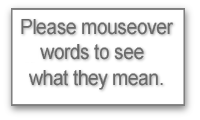James Bendle - climate models and reality
21-January-2010
Climate models and the real world transcript
Climate forcing is the cause that gives you a response from the climate system. So one example could be the eruptions of Mount Pinatubo in the 1990s, which ejected a lot of sulphates, which are very reflective aerosols, into the stratosphere. That caused a noticeable cooling for a couple of years in the climate.
Another forcing is the amount of greenhouse gases – gases that trap heat in the atmosphere. The levels of greenhouse gases are a forcing. In palaeoclimatology we're looking at changes in greenhouse gases and at changes in the orbit of the Earth around the Sun, and how that has changed climate over time.
All of these studies tell us about the sensitivity of the planet. Some of the information we can get from palaeoclimate studies is not properly captured or included in the current generation of climate models.
Slipping and sliding
So they do need palaeoclimate studies, especially for things like the response of ice sheets. It seems that palaeoclimatology and the work we do suggest that the climate is potentially even more sensitive to climate change than some of the models suggest.
The models include millions of equations that try to simulate complex interactions in the atmosphere and the Earth's surface. And the latest models are becoming increasingly detailed and have very high resolution. But the way they've been simulating ice sheets it seems they've been doing it in a way that's quite cautious and conservative. The ice sheets in models seem to respond more slowly than palaeoclimate and geological studies suggest.
The reason is that in a model you basically have a big lump of ice and the ice sheets have what's called a frozen bed. So if the planet gets warmer, you get melting of that ice but there's no dynamic response.
Modellers in the last 10 years have just had surface melting. But the palaeoclimate studies suggest that once you start to get some melting these ice sheets can respond in a way that we would say is dynamic.
So a little bit of melting from the surface of the ice sheet produces water that can percolate through the ice. That acts as a lubricant for the base of the ice sheet. Sediments under the ice sheet get sloppy and start to slip and slide. The ice can then slip and the whole ice sheet gets lower. You get loss of ice from the edge of the ice sheet into the ocean and that speeds up the melting process.
More help with words
| altitude | chemical | climate change | compounds | combine | element |
| friction | mathematical model | orbit | predict | system |
